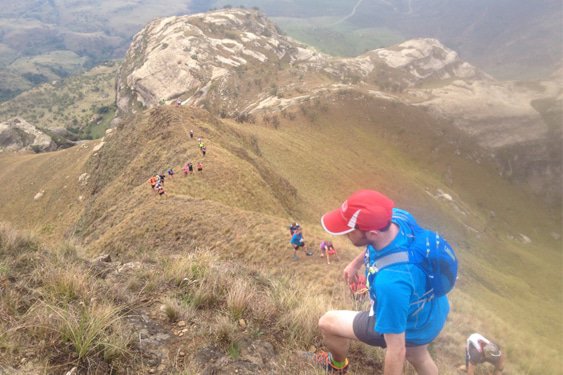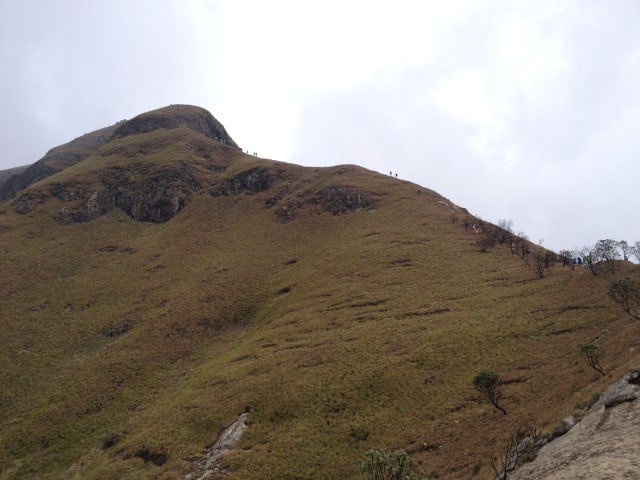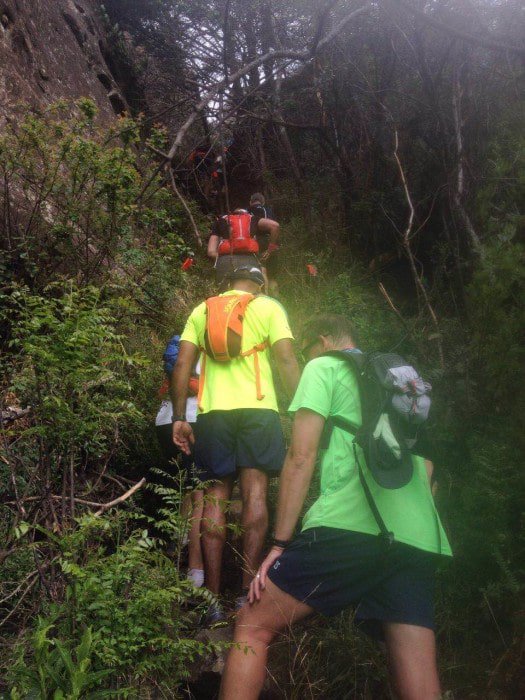Week 11: The Sound of Settling
The sound of birds chirping outside woke me. As I gazed – still with only one eye open – through the window, I noticed that the sun was already high above the horizon.

My heart immediately started racing at what felt like a million beats a minute. I leapt out of bed, and grabbed my watch from the bedside counter to see the time. 6:45 – and my race was starting at 7am! I swiftly pinned my race number, jumped into my kit, grabbed my backpack, and did a warm-up run to the canteen for a croissant (which had to be wrapped in a paper serviette for the drive).
As I was driving, I was calculating. And I concluded that there was a strong chance I was going to have to downgrade to the 15km, which was starting at 8am. But I really wanted to make my way to the top of the Drakensberg escarpment today – I hadn’t flown all the way from Cape Town to miss that.
On arriving at the race start I quickly milled my way through the 400-odd runners lining up to take on the 15km Challenge until I found race director Warren King. He laughed at me – but then gave me the go-ahead to start my race anyway, right from the very back of the pack. So far back that I was actually behind the sweeper, who he radioed to say that I was on my way.
Starting a race in a mild panic isn’t ideal for keeping one’s heart rate calm and steady. As I passed the 3km mark, I could feel that my heart rate was hitting a threshold it wasn’t comfortable with. It was probably a combination of bolting out the start gate too fast, so I could play catch-up; the baboons that I had just passed on a turn; and the Drakensberg altitude, which grabs hold of you quickly when coming from sea level.
I glanced down to see what my heart was up to – and realised that in my panic that morning, I had forgotten to put on my heart-rate monitor strap. It was still lying on the passenger seat of my car!
Today’s run was going to be based totally on Rate of Perceived Exertion, which is always a challenge for me. This wasn’t ideal, as I was going to be tackling the exact same 25km distance the following day, as part of the Run the Berg two-day stage race.
So for day one of the actual race, I took things incredibly slowly – and my body loved it. I gave it the opportunity to gradually come back to life, after being out of running action for close on three weeks.
I stopped at the top of every climb, looked around to take in the incredible views and capture a photo or two, and asked others how they were managing. And when I reached a gully and looked up to see 40-odd other heaving bodies making their way up the bottleneck, impossible to overtake, I laughed at my situation. So day one was by no means a race, and I crossed the finish line comfortably within my limits.
Day two was a totally different ball game. I pushed as hard as I could. After faffing about on the first day, I decided that I needed to see what my heart rate was capable of, and how much fitness I had lost during my 10-day flu stint two weeks previously.
I was in a bunch with three women, all vying to be at the front of the B Batch start, and I was having none of it. I took it easy for the first three kays and then opened the gas, and slowly started overtaking. I could feel my breathing was raspy and I was sucking hard for air; but my legs were feeling good, which was a fantastic sign. I kept glancing down at my watch, seeing a consistent heart-rate reading of between 180 and 185 – which is my lactic threshold, but not my all-out effort. I knew I had another 10% in me; but I just couldn’t seem to tap into it this time, which was frustrating me.
My endurance capability was strong, as my legs were still fresh, but I was lacking speed on the flats – and on those flats, the ladies behind me were starting to close the gap. One girl in particular was playing a good game of cat and mouse. I managed to keep my three-minute lead on the long downhill, but nearer the finish line, with a kilometre to go, she was coming in hard and fast; and I could see she was giving her all to try and overtake me.
I had to push. I kept an eye on my watch: 186bpm, 188, 191… and as I turned the final corner for the last 20 metres, 194bpm. I crossed the finish line, and a weird, elated, gargled and garbled laugh escaped me. I had given it everything for that last four or five minutes – and I’d settled the deal I’d made with myself on the start line.
Things I have learnt this week.
– A proper dose of good, clean mountain air is good for the heart.
– It’s always better to start a race slowly, and then finish strong.
– Running speed can come down quickly after a couple of weeks of inactivity.
Alana Doyle is a committed trail and road runner and has completed events like the famed 160km UTMB (Ultra Trail Mont Blanc) run in France. This year her target events include the Hout Bay Challenge Trail Run and the Sanlam Cape Town marathon.
Follow Alana’s running journey here:
Week 2: My First Win… But at What Cost?
Week 3: When The Heart Says Go, But The Body Says No
Week 6: When The Heart Falls In Line
Week 7: A Little More Self-Control, Please!
Week 9: Cape Town Marathon Derailed
Week 10: A Time for Everything
Learn more from Polar about How To Measure Your Resting Heart Rate.
READ MORE ON: alana's blog heart-rate polar





